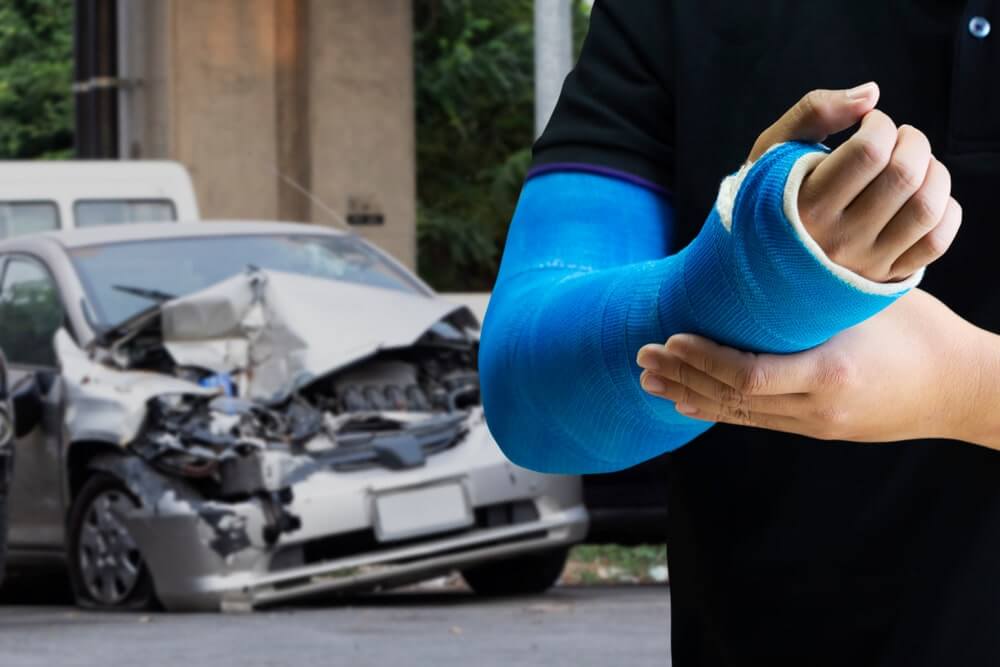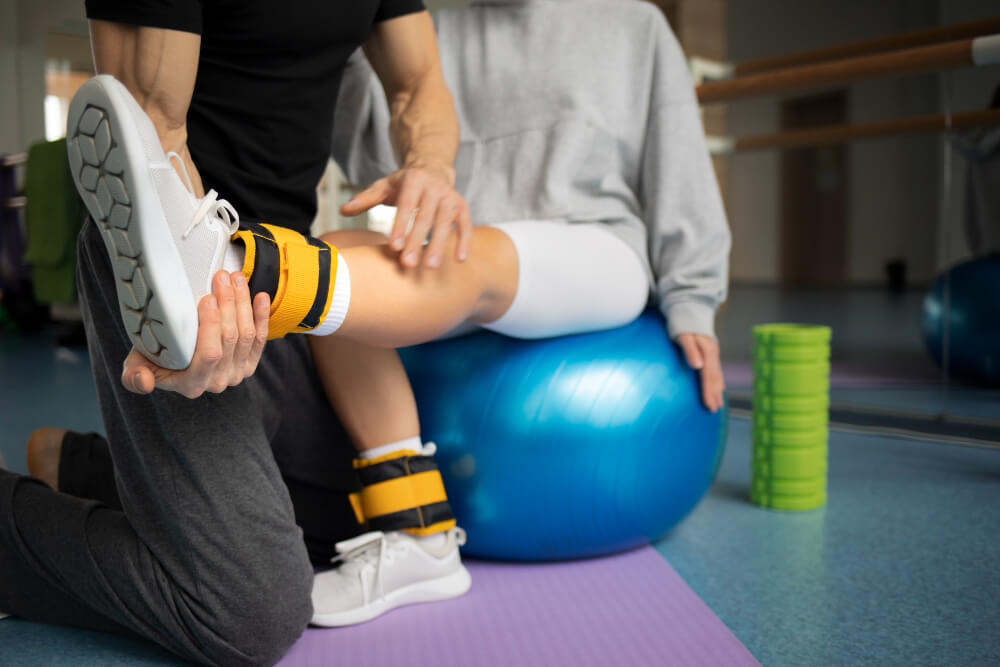Hit the Brakes on Recovery: A Comprehensive Guide to Broken Bones After a Car Accident
Being involved in a car accident is a stressful and frightening experience. In addition to the emotional toll, car crashes can also lead to physical injuries, with broken bones being a common occurrence. If you’ve recently been in a car accident and suspect you may have a broken bone, this article is here to help.
This comprehensive guide will equip you with the knowledge you need to navigate the road to recovery. We’ll delve into the following key areas:
- Symptoms of Broken Bones: Recognizing the signs and symptoms of a fracture.
- Diagnosis: Understanding how doctors diagnose broken bones.
- Treatment Options: Exploring the different treatment approaches for various types of fractures.
- Recovery and Rehabilitation: Tips for a smooth and successful recovery process.
- Complications: Being aware of potential complications associated with broken bones.
- Legal Considerations: Understanding your legal options after a car accident with a broken bone.
- Preventing Broken Bones in Car Accidents: Safety tips to minimize the risk of fractures in a collision.

Recognizing the Signs of a Broken Bone
The immediate aftermath of a car accident can be chaotic. However, it’s important to pay attention to your body for any signs of a broken bone. Here are some common symptoms to watch out for:
- Pain: This is the most common symptom of a broken bone. The pain can be sharp, throbbing, or dull and may worsen with movement.
- Swelling: The area around the break may become swollen due to inflammation and internal bleeding.
- Deformity: In some cases, the broken bone may become visibly deformed or appear out of alignment.
- Bruising: The area around the break may become bruised due to damage to blood vessels.
- Loss of function: Depending on the severity of the break and the location of the bone, you may experience difficulty or complete loss of function in the affected limb.
- Grating sensation: In some cases, you may feel a grating sensation at the fracture site when you move the bone.
Not All Pain Means a Broken Bone
It’s important to note that not all pain following a car accident signifies a broken bone. Muscle strains, sprains, and soft tissue injuries can also cause significant pain. However, if you experience any of the symptoms listed above, particularly in combination with each other, it’s crucial to seek medical attention immediately.
Diagnosing Broken Bones
If you suspect a broken bone after a car accident, you should seek medical attention right away. A doctor will typically perform a physical examination to assess the area of concern. They may also order one or more of the following diagnostic tests to confirm the presence and severity of the fracture:
- X-rays: This is the most common imaging test used to diagnose broken bones. X-rays create images of the bones, allowing the doctor to visualize the fracture and determine its location and type.
- CT scan: A CT scan provides a more detailed image of the bones and surrounding tissues compared to an X-ray. This can be helpful for diagnosing complex fractures or those involving the skull or spine.
- MRI scan: An MRI scan can be used to assess damage to soft tissues, such as muscles and ligaments, which may be present alongside a broken bone.
Treatment Options for Broken Bones
The treatment for a broken bone will depend on several factors, including the severity of the break, the location of the bone, and your overall health. Here’s an overview of the common treatment approaches:
Non-Surgical Treatment

- Immobilization: In many cases, a broken bone can heal on its own with proper immobilization. This can be achieved using a cast, splint, or brace. The cast or brace will restrict movement of the bone, allowing it to heal in the correct position.
- Pain Management: Your doctor will prescribe pain medication to help manage the discomfort associated with the fracture.
- Physical Therapy: Physical therapy may be recommended once the bone starts to heal. This can help improve range of motion, strengthen the muscles around the fracture, and restore function to the affected limb.
Surgical Treatment
- Open fractures: These are fractures where the broken bone protrudes through the skin. Open fractures require immediate surgery to clean the wound, prevent infection, and realign the bone fragments.
- Fractures near joints: Fractures that occur near joints can be more challenging to heal and may require surgery to ensure proper joint alignment and function.
- Certain bone types: Some bones, such as the collarbone, may not heal well on their own and may benefit from surgical intervention.
Types of Surgical Procedures:
There are several different types of surgeries that may be used to treat broken bones, depending on the specific needs of the patient. Here are some common procedures:
- Open Reduction and Internal Fixation (ORIF): In this procedure, the surgeon makes an incision to access the fracture site. They then use metal plates, screws, pins, or wires to hold the bone fragments in the correct position while they heal.
- Closed Reduction and Internal Fixation (CRIF): This procedure is similar to ORIF, but the surgeon manipulates the bone fragments back into place without making an incision. This is typically used for less severe fractures.
- External Fixation: In this procedure, pins are inserted into the bone above and below the fracture site. These pins are then connected to an external frame that stabilizes the bone fragments. External fixation may be used for complex fractures, open fractures, or fractures that cannot be held securely with internal fixation devices.
Recovery and Rehabilitation
The recovery time for a broken bone can vary depending on the severity of the break, the location of the bone, and your overall health. It typically takes several weeks to several months for a broken bone to heal completely. However, you can expect to experience some pain and limitations in movement during this time.
Here are some tips for a smooth and successful recovery:
- Follow your doctor’s instructions carefully. This includes taking any prescribed medications, attending physical therapy appointments, and avoiding activities that could put stress on the healing bone.
- Elevate the injured limb. This can help reduce swelling and pain.
- Apply ice packs to the affected area. Do this for short periods throughout the day, especially in the first few days after the injury.
- Maintain a healthy diet. Eating a nutritious diet will provide your body with the nutrients it needs to heal properly.
- Get adequate rest. Your body needs time to heal, so make sure you’re getting enough sleep.
- Be patient. Healing takes time. Don’t get discouraged if you don’t see results immediately.
Complications of Broken Bones
While most broken bones heal without complications, there are a few potential issues to be aware of:
- Nonunion: This occurs when the broken bone fragments do not heal together properly.
- Malunion: This occurs when the broken bone fragments heal in the wrong position.
- Infection: This is a risk with any open fracture or surgery.
- Stiffness: This can occur if the joint near the fracture becomes stiff due to immobilization.
- Blood clots: This is a risk, particularly for fractures in the legs.
Legal Considerations
If your broken bone was caused by a car accident that was not your fault, you may have legal grounds to seek compensation for your medical bills, lost wages, and pain and suffering. An experienced personal injury lawyer can advise you of your legal options and help you navigate the claims process.
Preventing Broken Bones in Car Accidents
While car accidents are unpredictable, there are steps you can take to minimize your risk of suffering a broken bone in a collision:
- Always wear your seatbelt. Seatbelts are the most effective way to prevent injuries in a car accident.
- Use proper child restraints. Make sure all children in the vehicle are properly secured in age-appropriate car seats or booster seats.
- Adjust your headrest. A properly adjusted headrest can help prevent whiplash injuries, which can sometimes lead to fractures in the spine.
- Drive defensively. Be aware of your surroundings and avoid distracted driving behaviors like texting or talking on the phone while behind the wheel.
- Maintain your vehicle. Make sure your car is in good working order, with properly inflated tires and functioning brakes.
